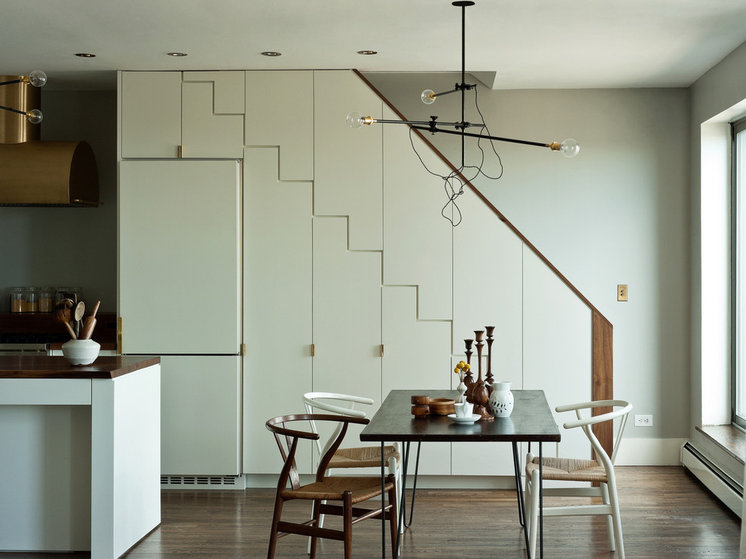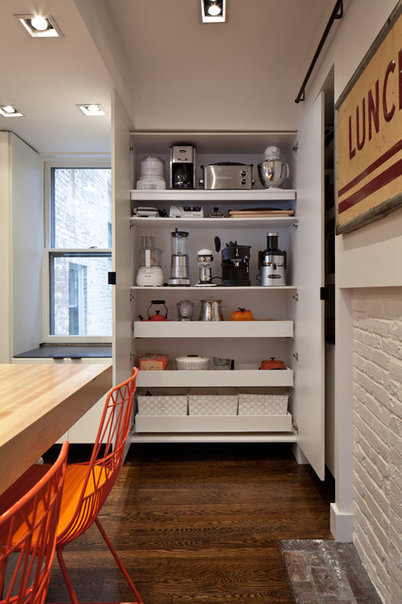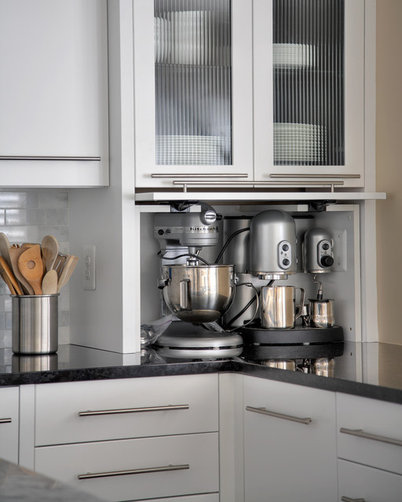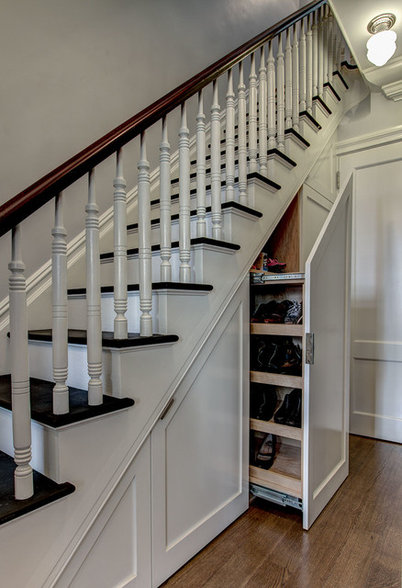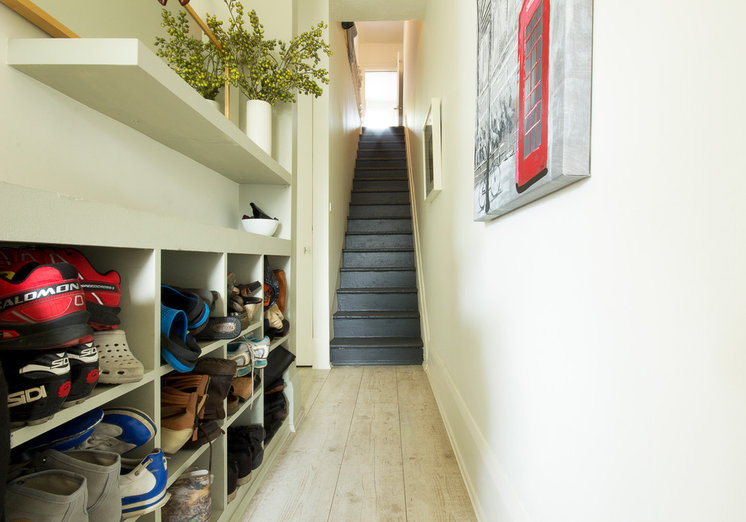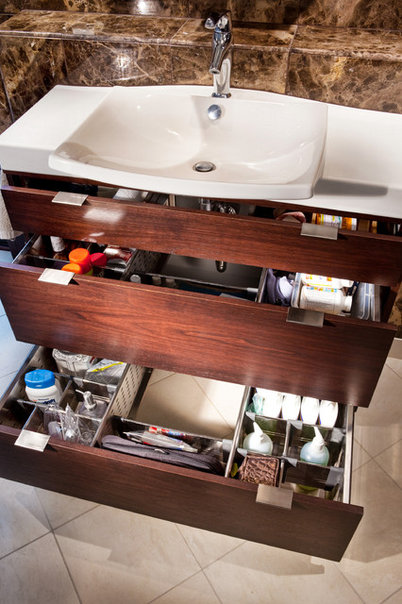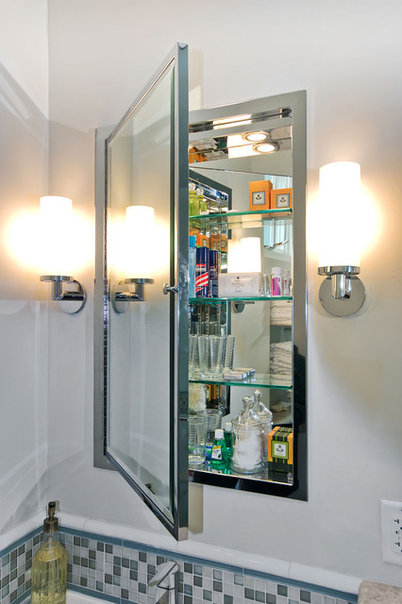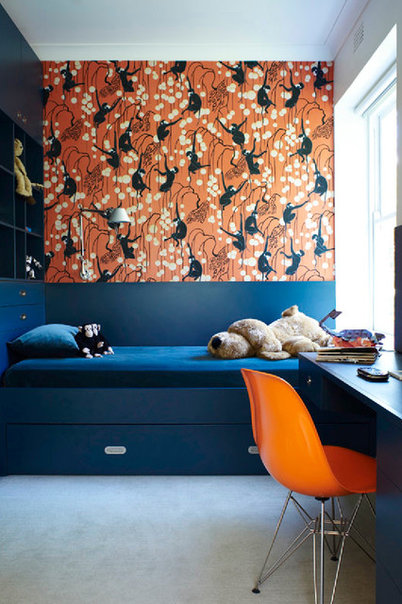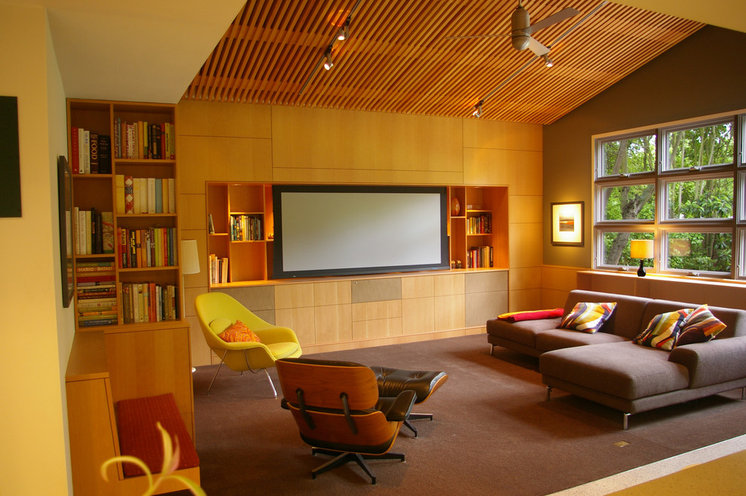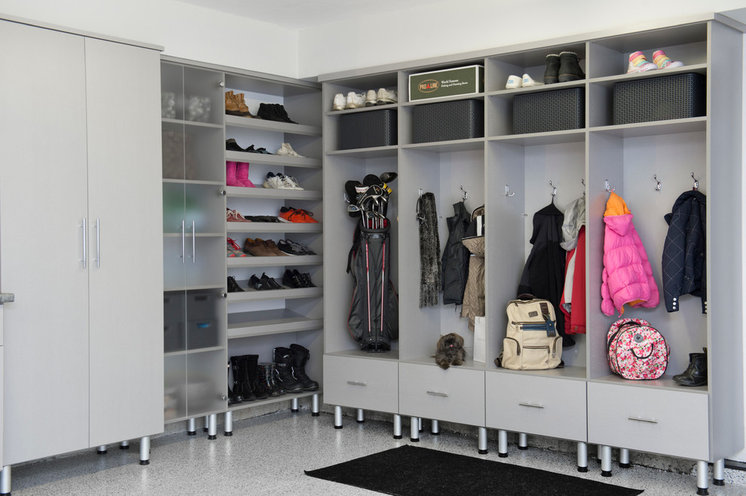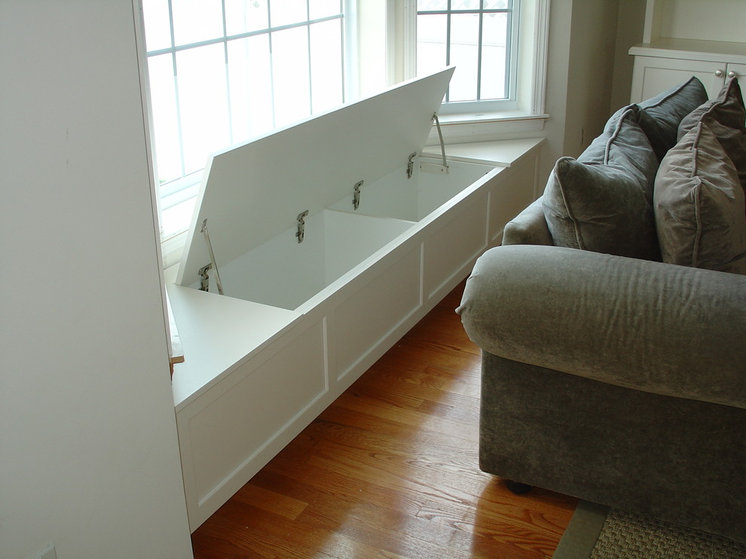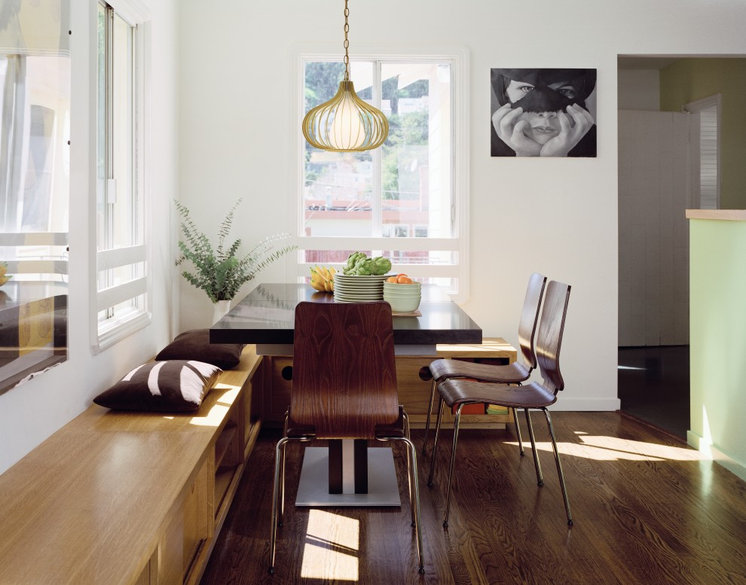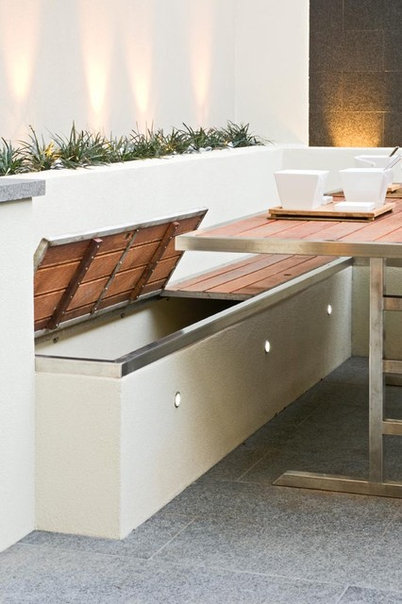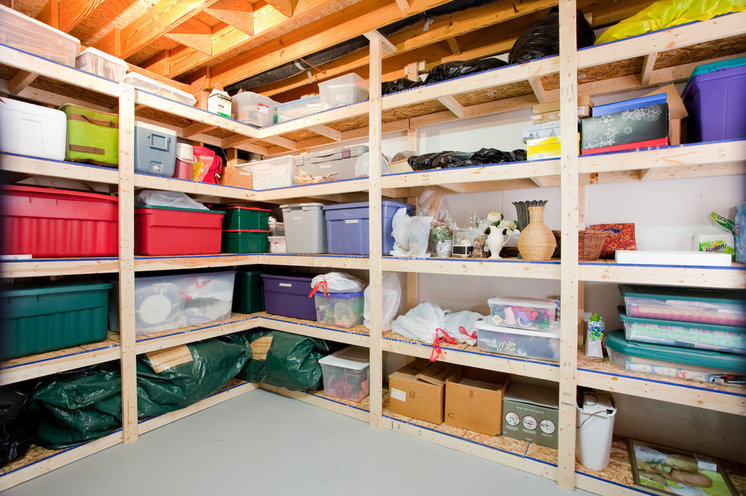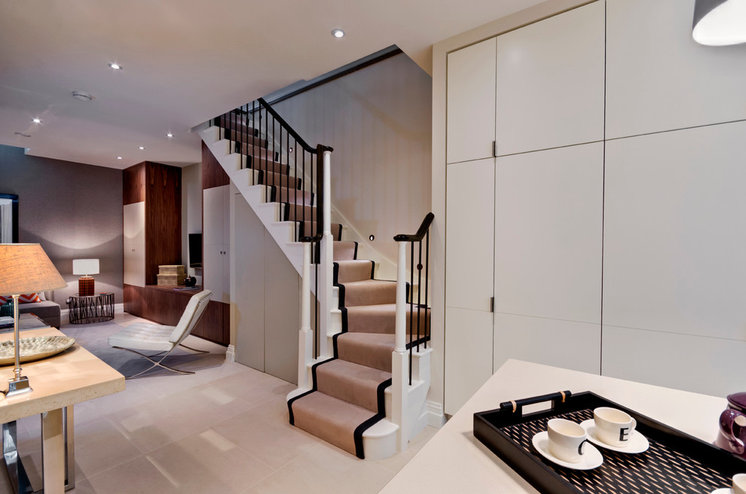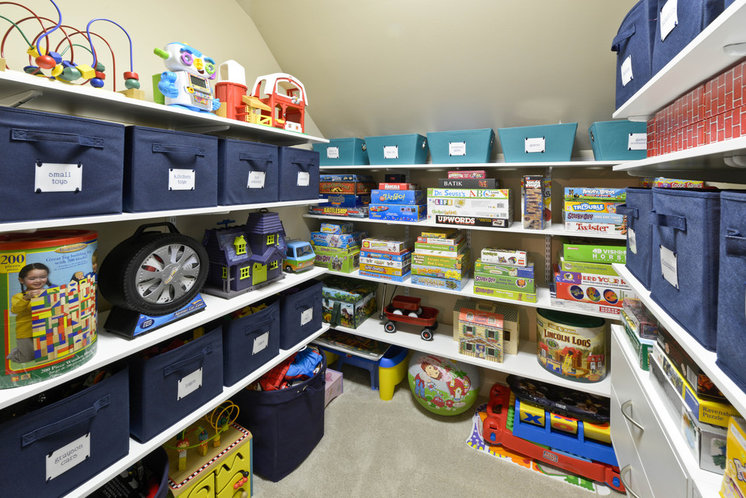“It’s amazing all the ‘stuff’ we accumulate over time. And then you realize you have no place to put anything any more and your home is looking cluttered. It might be time to get creative.”
Denise Buck & Ed Johnson – DC Metro Realty Team
Don’t worry. I’m not going to tell you to throw out your stuff or give it away. And I’m not going to give you advice on how to part with it. Instead, I’m going to give you design tips on how to get it out of sight, quickly and easily. The trick to living without clutter is to make it super easy for you and your family to clean up fast. Follow these tips, and you’ll be amazed at how quickly your home can go from chaotic to calm in no time.
1. Closed storage. Everyone likes the look of open shelving when everything is lined up just so, but the truth is, it’s not always practical to keep everything in perfect order. Closed storage can look just as great, when it’s well thought out. If you have lots of stuff, stay away from open shelving whenever you can, and conceal your stuff behind doors and drawers.
2. Kitchen. Keep your counters clear. Dedicate a space for small appliances that’s easy for you to access. Pullout shelves make it easy to store heavier appliances, like blenders and coffee makers.
If you don’t have the luxury of space for a dedicated appliance cabinet, consider creating an appliance nook or an appliance garage on your counter to tuck them out of the way and out of sight.
3. Stairs. Under the stairs is always a great place to hide stuff, but it’s easy for that space to turn into a black hole if it’s just an open area. Use pullouts to organize and make that space easy to access.
4. Foyer. This is the one space where open shelving really makes sense, so shoes and boots can properly air out. Stinky shoes that share storage with coats will inevitably make the coats smell a little funky.
5. Bathroom. The same rules apply for the bathroom as for the kitchen. Keep your counters clear of stuff. Use a vanity with drawers. Don’t even consider a pedestal sink or a vanity with doors if you tend to be a hoarder. Get the most convenient, easy-to-use storage with drawers. (The drawers can even be organized.)
And don’t stop at vanity storage. Maximize your storage by using your mirror as a medicine cabinet as well. If you don’t like the feel of a bulky medicine cabinet at your sink, recess it into the wall. This can often create even deeper storage.
Should you go with a recessed or wall-mounted bathroom mirror?
6. Kids’ room. You may have to remind your children a hundred times that they actually have storage under their bed, but a bed with built-in drawers can help them clean up after themselves.
7. Living room. Even if you try to keep stuff out of the living room, it will eventually migrate back to your more commonly used spaces. Build or buy storage (at least 24 inches deep) with large doors and deep drawers. It’s all about the ease of throwing stuff in there quickly.
8. Garage. If your house is designed to be accessed from the garage, this is a great idea for keeping more stuff from entering the house. Invest in a well-constructed storage unit to make the most of this space.
9. Bay window. As a designer, I’m always struggling with how to best deal with a bay window when I’m laying out a space. I love this idea of squaring off the wall and using that space as trunk-style storage.
Note: It’s really important that your window storage has locking hardware to keep the lid open. It makes it much easier to clean up faster.
10. Indoor furniture. It’s such a bonus when furniture does double duty. If you are having a bench built for seating, I recommend you ask the millworker to build drawers into the face of the bench. It’s a really easy and clean way to add more storage.
11. Outdoor furniture. When planning your outdoor space, always create a storage space that is large and waterproof. You don’t want to have to bring all your outdoor stuff indoors when the weather changes.
12. Basement. This is another area that doesn’t always need closed storage, especially if it’s a space dedicated to storage. Stock up on budget racks and store everything you don’t want to part with but don’t actually use. If you apply the Pareto principle, you probably use only 20 percent of your stuff. So that means you can store the other 80 percent.
If you want to use your basement as living space, then use the closed-storage method to hide that other 80 percent of your stuff.
13. Final tip. If you are working on decluttering, don’t let the state of the inside of your cabinets or drawers deter you from clearing the stuff out of your living space. Once you get a sense of what it’s like to live without clutter all around you, the urge to organize your closets and drawers will come. The first step to clutter-free living is to get the stuff out of sight.
Originally posted on HOUZZ, by Gillian Lazanik
